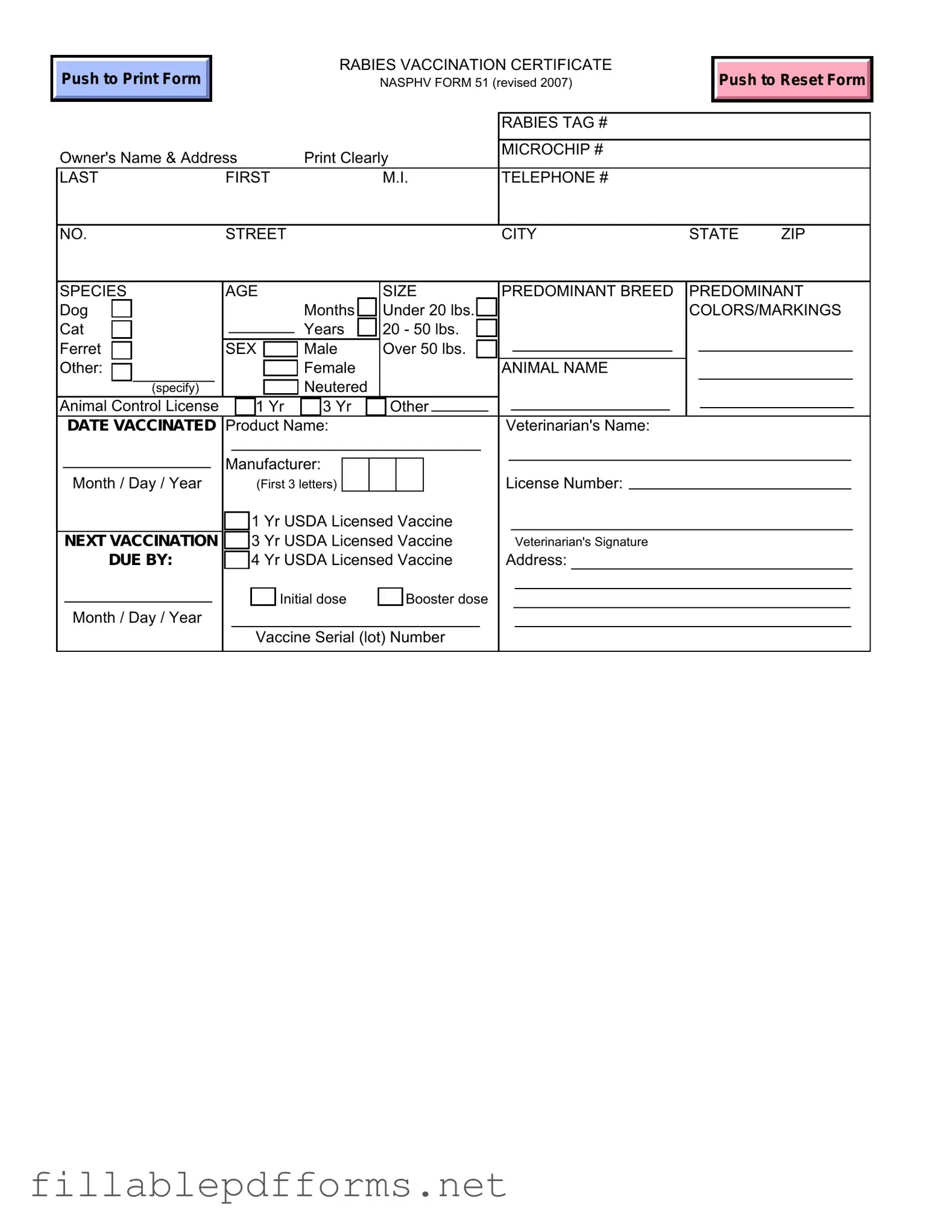The Rabies Certificate form serves as a crucial document for pet owners, veterinarians, and animal control authorities. This form, officially known as NASPHV FORM 51, is designed to provide essential information regarding the rabies vaccination status of an animal, whether it be a dog, cat, ferret, or other species. It includes sections for the owner's name and contact details, ensuring that pet owners can be easily reached if necessary. The form also requests specific details about the animal, such as its species, age, size, and predominant breed, as well as its microchip number, if applicable. Importantly, the vaccination history is documented, including the date of vaccination, the product name of the vaccine, and the veterinarian’s signature, which validates the information provided. Additionally, the form indicates the due date for the next vaccination, helping owners keep track of their pet’s health needs. By requiring this information, the Rabies Certificate form plays a vital role in public health and safety, ensuring that animals are vaccinated against rabies and that their owners remain accountable for their pets' wellbeing.
